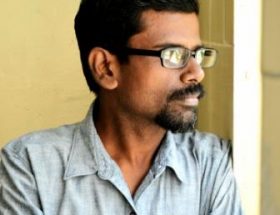Surabhi Agarwal
The Indian government recently released data from the socio-economic and caste census (SECC), 2011. The data mostly relates to incomes, standards of living and land-ownership patterns in rural India. However, this data is incomplete, and the most crucial aspects of the SECC, which relate to the caste composition of the Indian population, are yet to be made public.
The SECC is the first census conducted in independent India to have recorded the caste of its respondents (rather than merely recording the government designated categories of SC, ST or general). So, for the first time since the British India census of 1931, the size of individual caste groups, and precisely how their caste status correlates with their socio-economic standing will be revealed. Perhaps most crucially, we will come to know the exact numerical strength of all castes which fall in the category of Other Backward Classes (OBC); since the size of this category has never been accurately determined.
The Mandal Commission, appointed by the government in 1979 to review reservation policy in India, estimated that the country’s OBCs constitute about 54% of the population, a figure based on the 1931 census. They were accordingly given 27% reservation in government jobs and educational institutions, alongside the already existing 23% reservation for SCs and STs. But according to some informed estimates, the actual OBC population size is likely to be much higher today. Also, the economic standing of people falling under this category is thought by many to be much worse than is acknowledged by the ruling elites.
According to a Hyderabad-based activist and intellectual, Kuffir Nalgundwar, the released partial SECC data gives strong indications of this. In an analysis he has presented on social media, he states that the data shows 6.86 crore landless Indian households, and of these 1.81 crore belong to SC and 70 lakh to the ST category. This, he suggests, implies that the remaining 4.34 crore households must belong to OBCs. This does seem likely to be the case, since it is very improbable that a significant number of upper-caste households in rural India would be landless.
If it is indeed revealed that OBCs have a larger population size and worse socio-economic standing than our current policies take into account, it will result in widespread demands for expanding reservations and other benefits. The validity of the Supreme Court imposed 50% cap on reservations in all central public institutions, will no doubt be challenged.
In such a scenario, the government’s failure to release this data seems entirely deliberate; a ploy by the BJP to avoid the tough questions, and vociferous demands for justice the data will raise, especially in the caste-riven state of Bihar, where assembly elections are around the corner.
It is no secret that in India the upper-castes dominate every powerful institution. They are overrepresented, to an overwhelming degree, in universities, in the bureaucracy, in the media, in well-paying government and private-sector jobs. On the other hand, most lower caste people continue to be stuck in their traditional caste-based occupations (or their modern-day equivalents) and work as small farmers, artisans, craftsmen, farm and industrial labourers, sanitation workers, domestic workers, barbers, cobblers, ironsmiths, carpenters and other such low-paying and exploitative jobs. Thousands of years of oppression and discrimination, which continue to the present day, have kept the vast majority of Indian’s population socially and economically immobile.
Caste-based affirmative action undertaken by the government in compliance with its duties under the Indian constitution has to a large extent been responsible for the few small dents which have been made in upper-caste dominance since independence. However, the ruling classes have managed to undermined the constitutional directive to the government to promote the interests of India’s “weaker sections” by disallowing any attempts to determine who exactly constitute these weaker sections. This is why caste was not included in our national census for over 80 years. A caste-based census was finally agreed to in 2011, due to rising pressure by regional parties such as the Janta Dal, the Samajwadi Party and the Rashtriya Janta Dal, which have OBC leaders. These parties have emerged as powerful political forces in the last couple of decades, in the wake of the Mandal Commission report and the widespread OBC politicisation it led to.
Release of the SECC caste data could mark a transition in Indian society and politics similar to, and possibly even more far-reaching than the one brought by the Mandal Commission report. This is what worries our ruling elites, who wish to conveniently keep the data under wraps for as long as possible; and this is what makes it necessary for everyone who aspires to a more just and equal society to demand its immediate release.
~ Surabhi Agarwal, Research Cell, Socialist Party (India)
~~~
[Courtesy: Socialist Party (India), July 24, 2015]










